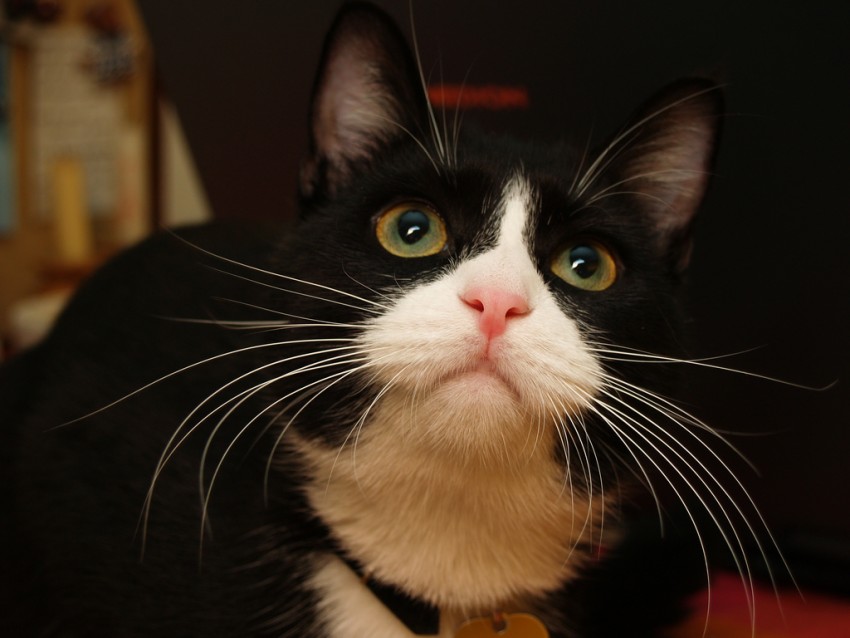
Right after a kitten is born, she uses her smelling sense to find her mother’s milk.
After that is accomplished, a kitty’s sense of smell leads her to all kinds of food — in all kinds of locations.
A cat’s sense of smell is much stronger than that of people — 14 times stronger, to be exact. This is because cats have nearly 70,000 “smell receptors” tucked away in their nasal area — humans have only 20,000. Cats’ noses allows them to sniff out food, mates and enemies, as well as their own territory, which they have previously marked.
I also discovered through research that a cat can smell the difference between a gallon of plain water and a gallon of water with a little salt in it. (To humans, salt does not have a smell.)
Jacobson’s Organ
Cats can even “taste” smells, as they have a set of sensory organs at the back of their mouths.
If your kitten seems to gulp in air when she is investigating something, no need to worry; that’s just Jacobson’s organ kicking in.
Besides their unique sense of smell, cats also rely on other senses to enhance their mouse-hunting skills. A cat’s eyesight and hearing are a big help with their natural hunting and chasing instincts. All of these senses allow felines to pinpoint the location of mice and other rodents, making them a high-alert, patient, nearly perfect predator of mice.
Get this: A cat’s whiskers can even detect motion created by air movement (such as a tiny mouse scurrying around in total darkness).
Noses Are a Small Part of the Total Package
Cats’ noses aren’t the only thing involved in “the hunt.”
In fact, noses are just a small part. It’s the total package — a sense of smell, a sense of hearing, a sense of taste, very sensitive whiskers and an instinct for “the chase” — that makes your fluffy kitty cat a well-oiled mouse-hunting machine.
Thinking back to my childhood years, I can remember my grandmother always having at least 2 cats around.
Of course, my cousins and I loved trying to cuddle those kittens. We enjoyed playing with them, dangling a string in front of them and watching as they pawed at the string, trying to catch it.
As I got older, I learned more about feline traits, and research along the way has given me a little better understanding of the “cat versus rat” motivation.
If my grandmother were alive today, I would definitely commend her on her cost-effective technique of mouse-proofing her home.


